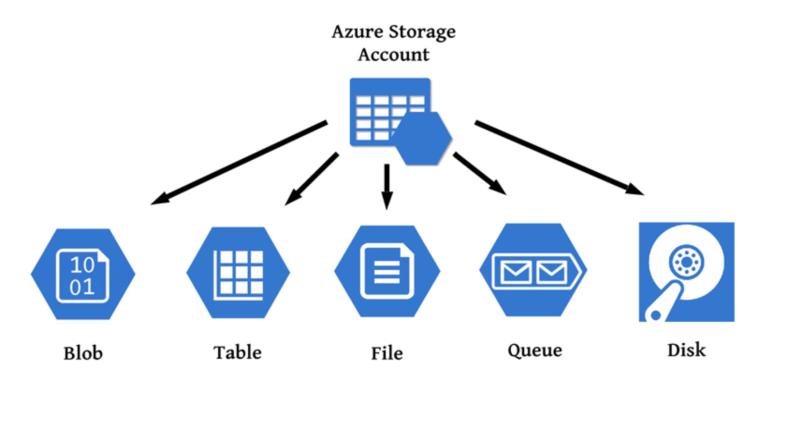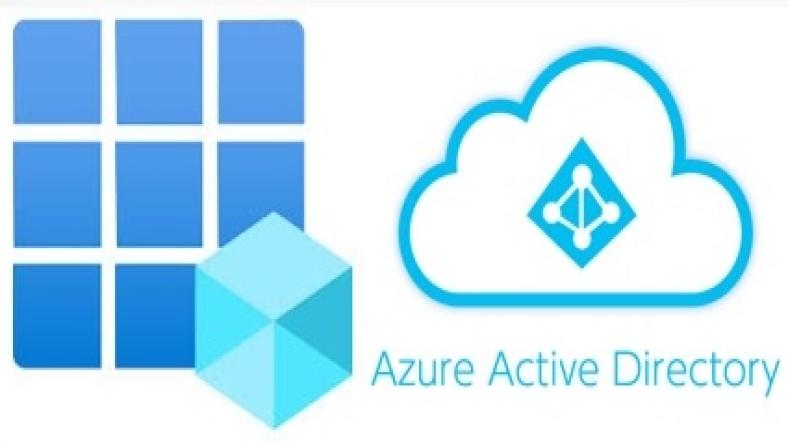Azure Storage is a cloud service provided by Microsoft Azure that allows users to store and manage data in a highly scalable, secure, and cost-effective manner. One of the core components of Azure Storage is the Azure Storage Account. An Azure Storage Account provides a unique namespace for storing data in Azure and serves as the container for different types of storage services, such as Blob Storage, File Storage, Queue Storage, and Table Storage.
For example, a company might use an Azure Storage Account to store images (Blob Storage), share files between applications (File Storage), or manage messages between services (Queue Storage).
Azure Storage Accounts are foundational to any application or service that requires persistent data storage in the Azure cloud. Whether you’re building web applications, running big data analytics, or handling backups, understanding how Azure Storage Accounts work is crucial for leveraging the full potential of Azure’s storage services.
This article provides an in-depth overview of Azure Storage Accounts, their components, different types of storage, and how to use them effectively.
Key Concepts of Azure Storage Accounts
1. What is an Azure Storage Account?
An Azure Storage Account provides a way to manage your storage resources in the Azure cloud. When you create a storage account, you can access and manage different types of data storage services in one unified platform. The storage account is the top-level resource, and all data within it is associated with that account.
For example, a storage account in Azure might house both Blob Storage for document files and File Storage for shared folders between virtual machines (VMs).
Storage accounts are designed to provide access to various types of data storage solutions, which can be divided into several categories:
- Blob Storage: For storing unstructured data, such as text, images, videos, and backups.
- File Storage: For storing shared file systems, typically accessed via SMB protocol.
- Queue Storage: For storing messages that can be processed asynchronously.
- Table Storage: For storing structured NoSQL data in a key-value format.
Each storage account comes with its own globally unique namespace, ensuring that resources within the account are isolated and can be accessed via specific APIs or SDKs.
2. Storage Account Types
Azure offers several types of storage accounts, each designed for different use cases based on performance, redundancy, and access requirements.
a) General-purpose v2 Storage Account (GPv2)
This is the most commonly used storage account type. It supports all the Azure Storage services (Blob, File, Queue, Table) and provides access to features like:
- Azure Blob Storage for data storage.
- Azure Files for SMB file shares.
- Queue and Table Storage for messaging and NoSQL storage.
- Access tiers (Hot, Cool, Archive) for managing data based on access frequency.
Example: A media company might use a GPv2 account to store video files (Blob Storage) while using Table Storage to manage metadata about those videos.
GPv2 accounts offer a great balance between cost and functionality and are suitable for most modern cloud applications.
b) General-purpose v1 Storage Account (GPv1)
Google Ad 1
This older version supports basic blob and file storage services but lacks features like access tiers (Hot, Cool, Archive) and other newer features found in GPv2. It also lacks support for some advanced features like premium performance options. GPv1 is generally considered deprecated for new applications, and Microsoft recommends using GPv2 for most use cases.
Example: An older application that uses GPv1 storage might store static website assets but would not benefit from newer features like lifecycle management or performance tiers.
c) Blob Storage Account
The Blob Storage account type is designed specifically for storing blobs (unstructured data). It offers enhanced capabilities for managing large amounts of unstructured data, including:
- Access Tiers: Choose between Hot, Cool, and Archive tiers based on how frequently data is accessed.
- Azure Data Lake Storage Gen2: For big data analytics workloads that require hierarchical namespace and file system capabilities.
Example: A photo-sharing app may use Blob Storage with the Hot tier for storing recently uploaded images, while moving older images to the Cool tier to reduce costs.
Blob storage accounts are ideal for applications that need to store massive amounts of unstructured data like images, videos, and log files.
d) Premium Storage Account
Premium storage accounts provide higher performance options using Solid-State Drives (SSDs) instead of standard HDDs. This is ideal for workloads that require low-latency, high-throughput, and fast access to data. Premium storage accounts are typically used for:
- Virtual machine disks (managed disks).
- High-performance database workloads.
- Enterprise applications requiring fast, low-latency data access.
Example: A high-traffic e-commerce website might use Premium Storage for its VM disks to ensure fast access to product catalog and transaction data.
Premium storage accounts support only Azure Blob Storage and are optimized for high-performance scenarios.
e) File Storage Account
File storage accounts allow you to create shared file systems in the cloud using the SMB protocol, which is compatible with both Windows and Linux. This is ideal for scenarios where multiple VMs or applications need to share access to a file system, similar to on-premises network file shares.
Example: A development team might use File Storage to share source code and configuration files across several virtual machines for collaborative software development.
Google Ad 2
Azure File Storage is often used for:
- Lift-and-shift migrations of legacy applications.
- File sharing across multiple platforms.
- Storing configuration or application files.
f) Blob Storage vs. General Purpose v2
While both Blob Storage and GPv2 accounts support Blob Storage services, GPv2 accounts provide additional features such as access tiers (Hot, Cool, Archive) and premium performance tiers for Blob Storage. Blob Storage accounts are specialized for unstructured data but do not offer the same flexibility and features as GPv2. Therefore, most new applications should opt for GPv2 accounts.
Example: A cloud-native application using microservices and object storage would benefit from the flexibility of a GPv2 account to choose access tiers, while a simple media service might just need Blob Storage accounts for straightforward object storage.
3. Storage Account Features
Azure Storage accounts come with various advanced features that help optimize performance, cost, and security. Some of the key features include:
a) Data Redundancy
Azure offers several redundancy options to protect data and ensure high availability across regions:
- Locally redundant storage (LRS): Data is replicated within a single data center.
- Geo-redundant storage (GRS): Data is replicated across two geographically separated data centers for higher durability.
- Zone-redundant storage (ZRS): Data is replicated across availability zones within a region.
- Read-access geo-redundant storage (RA-GRS): Provides read-only access to the secondary region in case of failure.
Example: A global e-commerce platform might choose RA-GRS to ensure that its product catalog and order data are always accessible, even during regional outages.
Choosing the right redundancy model depends on your business continuity and disaster recovery needs.
b) Access Tiers
For Blob Storage, Azure allows you to define access tiers to optimize costs based on data usage patterns:
- Hot Tier: For frequently accessed data.
- Cool Tier: For infrequently accessed data, with lower storage costs but higher retrieval costs.
- Archive Tier: For rarely accessed data with the lowest storage cost, but high retrieval latency and costs.
Example: A healthcare organization may store patient records in the Hot tier for easy access but move completed records to the Archive tier after a certain time to save costs.
The ability to manage storage costs by moving data between different tiers allows businesses to efficiently optimize storage expenses.
Google Ad 3
c) Security and Compliance
Azure Storage offers robust security features to protect data:
- Encryption at rest: All data in Azure Storage is encrypted by default using Azure Storage Service Encryption (SSE).
- Data-in-transit encryption: All data transferred between clients and Azure Storage is encrypted using TLS/SSL.
- Azure Active Directory (AAD) authentication: For role-based access control (RBAC) and fine-grained access to resources.
- Shared Access Signatures (SAS): Securely grant limited access to specific storage resources without exposing account keys.
Example: A financial institution might use SAS tokens to securely allow third-party auditing services to access logs stored in Azure Blob Storage.
Azure Storage is compliant with a wide range of regulatory and industry standards, including ISO 27001, GDPR, HIPAA, and SOC 2.
d) Blob Lifecycle Management
Azure provides tools for automating data management, such as:
- Lifecycle management policies: Automatically move data between different access tiers or delete it based on defined rules (e.g., age of the data, access frequency).
- Soft delete: Allows you to recover deleted blobs or containers within a retention period.
Example: A media company may set up a lifecycle policy to move video files to the Cool tier after 30 days of inactivity and delete them after 90 days.
e) Performance and Scalability
Azure Storage accounts are designed for scalability. As demand grows, storage accounts can handle increasing volumes of data, with the ability to scale up and down based on application requirements. Premium storage accounts provide low-latency, high-throughput storage to meet the needs of performance-sensitive applications.
Example: A cloud gaming service may use a Premium Storage account to ensure low-latency access to user data during peak gaming hours.
4. How to Use Azure Storage Accounts
Here’s an overview of the typical workflow for using Azure Storage Accounts:
- Create a Storage Account: Begin by creating a storage account in the Azure portal, specifying the account type, region, and other configuration options.
- Choose a Storage Type: Depending on your use case, you can opt for Blob, File, Queue, or Table Storage. For example, Blob Storage is ideal for unstructured data like images and videos, while Table Storage is used for NoSQL data.
- Upload and Manage Data: Use Azure’s tools (Azure Storage Explorer, Azure CLI, PowerShell, or SDKs) to upload data to the storage account and manage files. You can also set up storage containers (for Blob Storage) or file shares (for File Storage).
- Implement Access Control: Use Azure Active Directory (AAD) or Shared Access Signatures (SAS) to manage access to your storage resources. Set up appropriate role-based access control (RBAC) to enforce secure access.
- Optimize Costs: Use access tiers and lifecycle policies to move infrequently accessed data to cheaper tiers, and automate data retention policies to manage storage costs.
Example: A business might use lifecycle management policies to automatically archive customer documents to the Archive tier after 180 days.
5. Best Practices for Using Azure Storage Accounts
- Use the right account type: For most applications, GPv2 accounts offer the best balance of features and performance. Choose Premium Storage for performance-sensitive workloads.
- Secure your storage: Enable encryption, use Azure AD for authentication, and implement network security rules (e.g., IP firewalls, private endpoints) to restrict access.
- Manage costs effectively: Take advantage of access tiers to lower storage costs and use lifecycle management policies to delete or archive old data.
- Monitor performance: Use Azure Monitor and Azure Storage metrics to monitor the health and performance of your storage account. Optimize storage resources based on usage patterns.
Conclusion
Azure Storage Accounts are a fundamental part of Azure's cloud storage offerings, providing scalable, reliable, and secure storage solutions for all types of data. By choosing the appropriate storage account type and configuring features like data redundancy, access tiers, and lifecycle policies, businesses can optimize both cost and performance.
Whether you’re building a web application, storing backups, or processing large datasets, understanding how Azure Storage Accounts work is crucial for designing and maintaining efficient cloud storage architectures. By following best practices for security, cost management, and performance monitoring, you can ensure that your storage resources are both cost-effective and aligned with your application’s needs.
Thanks for reading the article, for more Science & Technology related articles read and subscribe to peoples blog articles.















